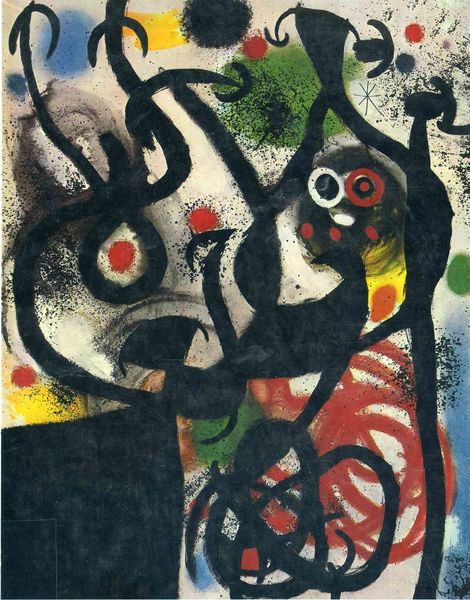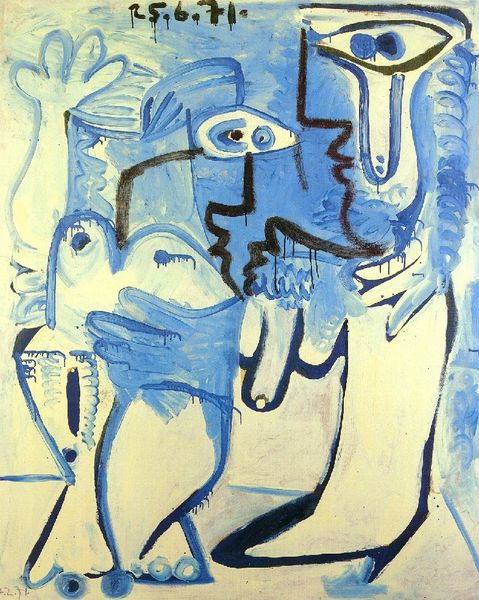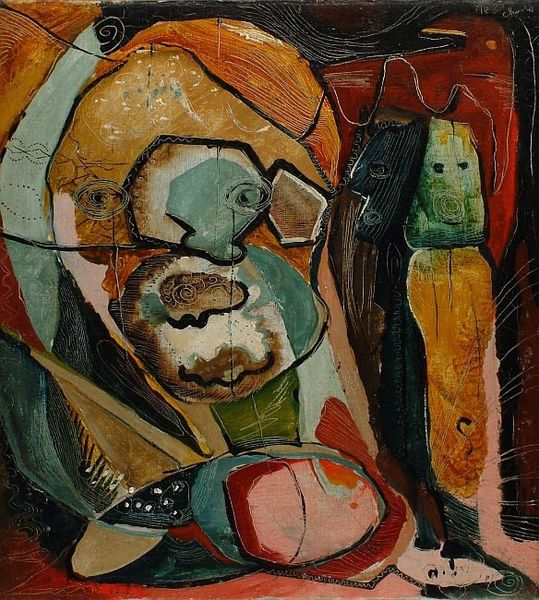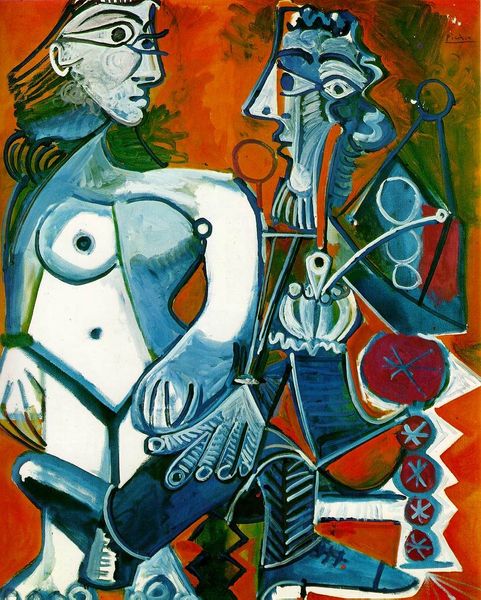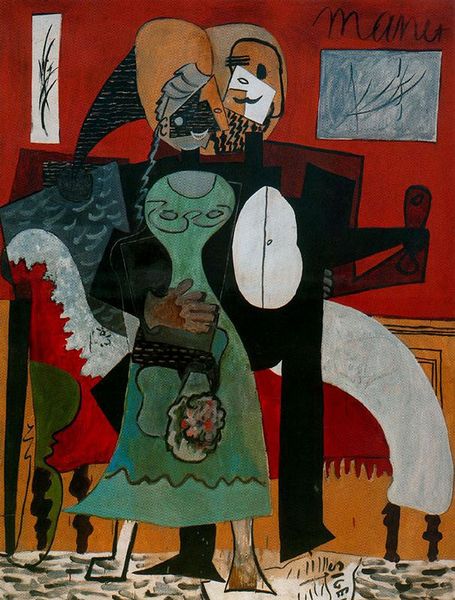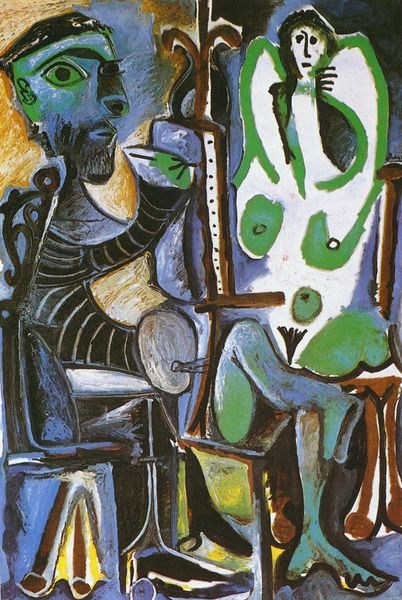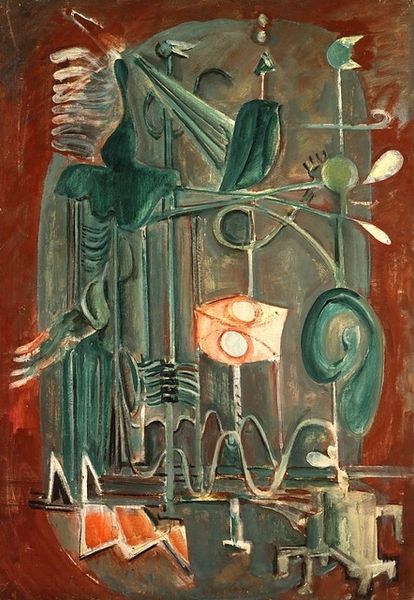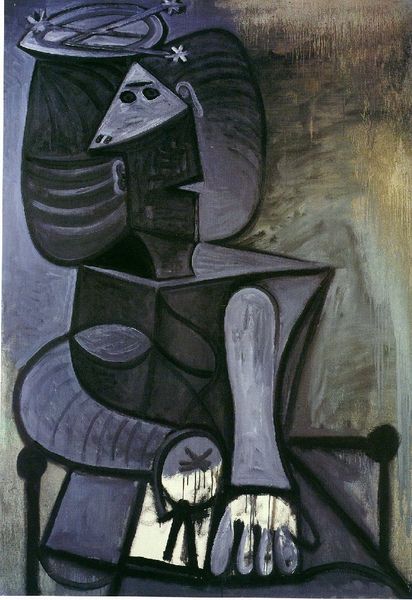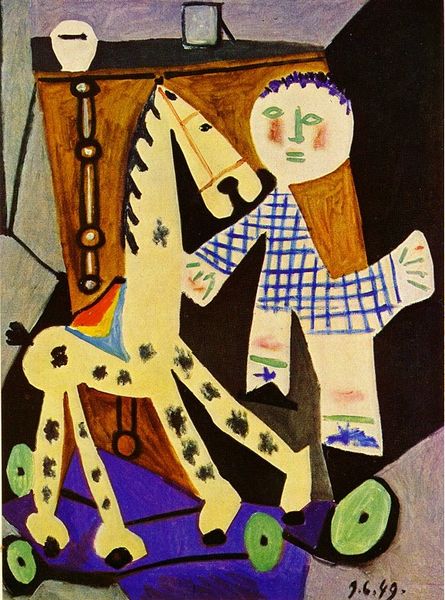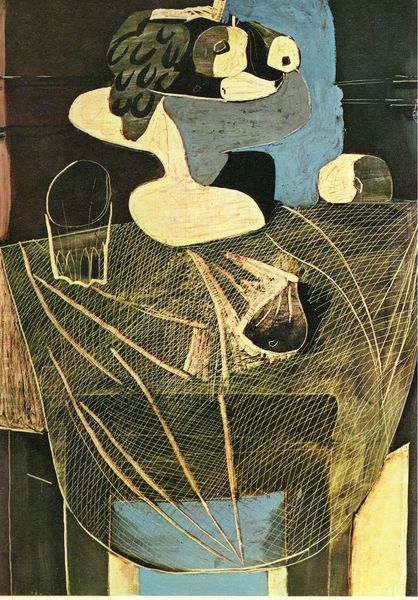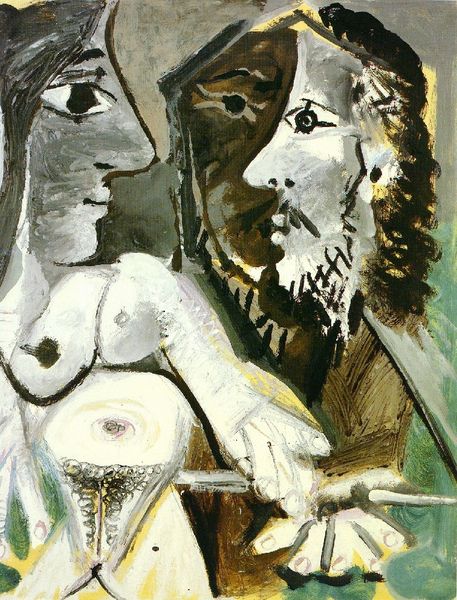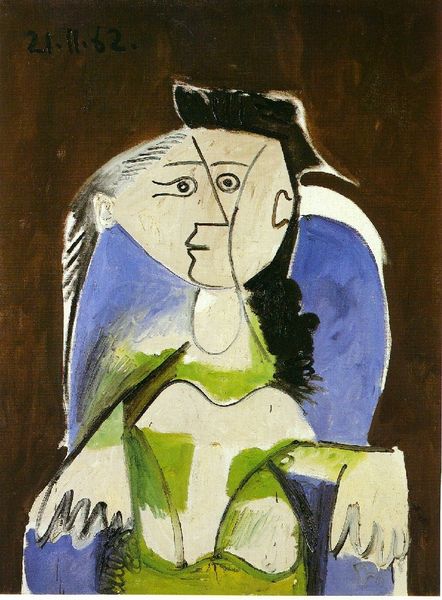
painting, oil-paint
#
portrait
#
cubism
#
painting
#
oil-paint
#
figuration
#
group-portraits
#
portrait art
#
modernism
Dimensions: 130 x 96 cm
Copyright: Pablo Picasso,Fair Use
Curator: Here we have Pablo Picasso's 1965 oil on canvas, entitled "Family". Editor: What strikes me first is the subdued palette, almost monochromatic, which gives it an unexpectedly somber tone, despite the subject matter. The fragmentation is also very jarring. Curator: It's certainly an interesting take on portraiture, especially considering the period. One wonders about Picasso's own family dynamics and how they might inform this abstracted representation. It has an uneasy presence. Editor: Exactly. There's an almost aggressive simplification of form. The faces appear mask-like, flattened. Notice how he subverts our expectations of likeness through the fracturing of space. What does it mean, though, for our collective understanding of family? Is he making a statement? Curator: Potentially. Keep in mind Picasso's lifelong interest in representing multiple perspectives simultaneously, a key aspect of Cubism. This is apparent in the rendering of the faces, each with eyes that look both forward and to the side. I think he might be deconstructing our sentimentalized vision. It may speak volumes about the fractured relationships or psychological complexities hidden behind the veneer of "family." What about that date at the top? What does that suggest about its creation? Editor: October 25, 1965. Intriguing. By then, Picasso was in his eighties, late in life. This places "Family" within the context of his reflections on aging, legacy, perhaps mortality. I wonder, if this were publicly exhibited in his lifetime, what critics and public responded to its style? Curator: Very little information of public reviews during that time. Art was rapidly moving to abstract expressionism. Perhaps critics appreciated his persistent focus on geometric form over subject at a period where his older stylistic choice was considered unappealing by younger avant garde crowds. Editor: This perspective reshapes my thinking of it. Considering its formal qualities and production timing really makes it sing. Thank you. Curator: Indeed, seeing "Family" through both a structural lens and its historical context enriches our understanding.
Comments
No comments
Be the first to comment and join the conversation on the ultimate creative platform.
